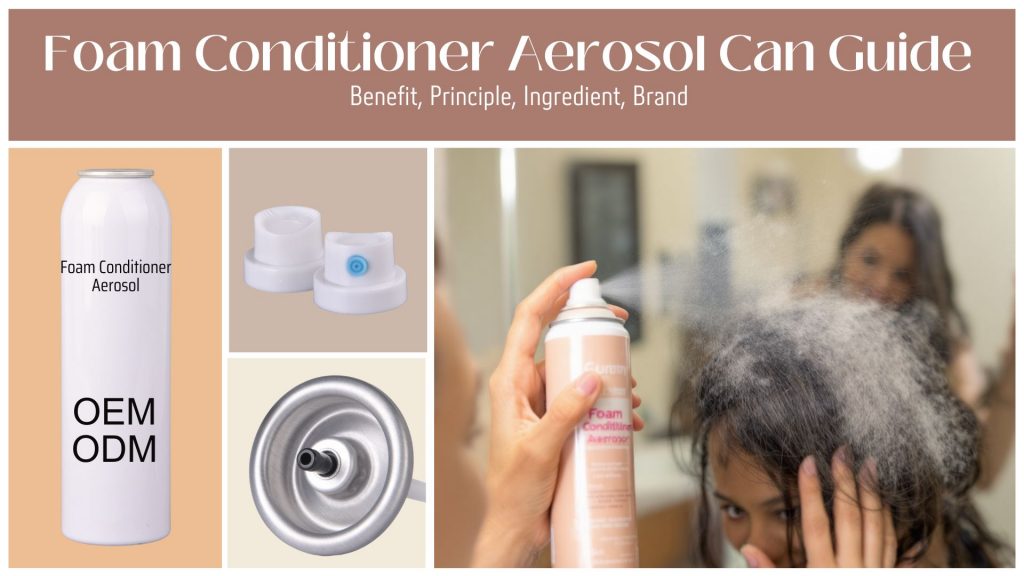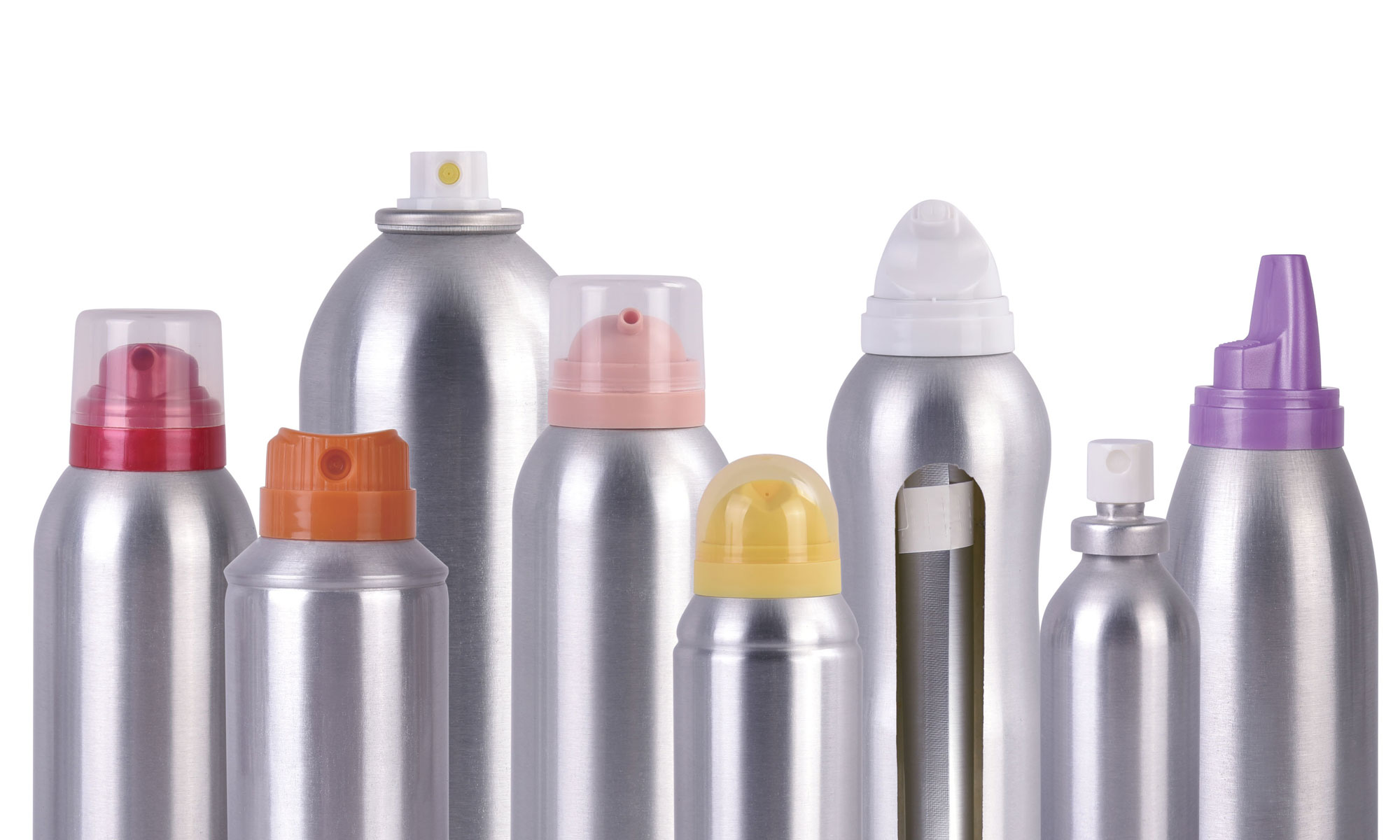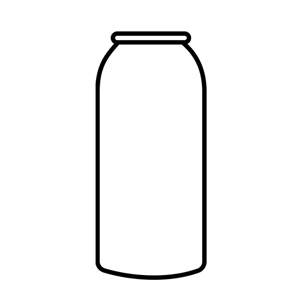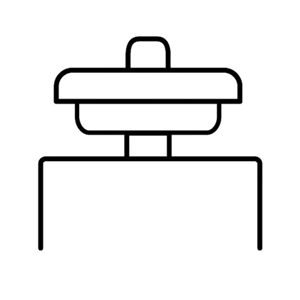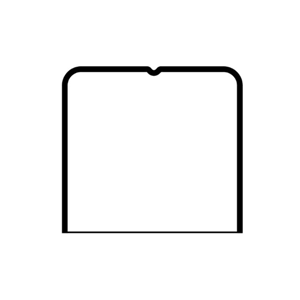The global leave-in conditioner market, particularly the foam conditioner segment, is witnessing robust growth. According to Transparency Market Research, this market is projected to expand at a Compound Annual Growth Rate (CAGR) of approximately 5.9% from 2022 to 2031 (Transparency Market Research). Foam conditioners are gaining popularity due to their lightweight texture and ease of application, catering to consumer preferences for convenient, non-heavy hair care solutions. This surge reflects a broader trend toward innovative hair care formats that combine efficacy with user-friendly designs, positioning foam conditioners as a key player in the evolving personal care industry.
This article serves as a comprehensive guide to foam conditioner aerosol cans, exploring their benefits, working principles, leading brands, price ranges, and available capacities. By delving into these aspects, we aim to provide valuable insights for consumers and industry enthusiasts navigating the dynamic world of foam-based hair care products.
What Is Foam Conditioner?
Foam conditioner, a type of leave-in hair care product, is dispensed as a lightweight foam from aerosol cans, offering convenience and ease of application. Hair conditioners, including foam variants, improve hair texture, manageability, and appearance by reducing friction between strands, minimizing scalp damage during brushing. Foam conditioners typically contain cationic surfactants, silicones, and unsaturated fatty acids, which coat the hair to prevent tangling and add smoothness without weighing it down. Their popularity stems from consumer demand for non-heavy, user-friendly hair treatments, with the global leave-in conditioner market projected to grow at a 5.9% CAGR from 2022 to 2031. Aluminum aerosol cans, often used for foam conditioners, provide sustainable, recyclable packaging options, aligning with eco-conscious cosmetic trends.
From an aerosol can manufacturer’s perspective, foam conditioners rely on specialized aluminum cans to deliver consistent foam dispersion, enhancing user experience. These cans, designed for wholesale hair foam conditioner packaging, ensure product stability and precise application. Ingredients like surfactants and emollients are optimized for foam delivery, catering to brands emphasizing lightweight hair care. Leading brands, prices, and can capacities vary, but sustainable aerosol packaging is increasingly prioritized to meet environmental standards. This guide explores the benefits, principles, and innovations in foam conditioner aerosol cans, offering insights for manufacturers and consumers navigating this dynamic market.
Top Foam Conditioner Brands: Pantene, UNITE, Echosline Shine in Aerosol Innovation
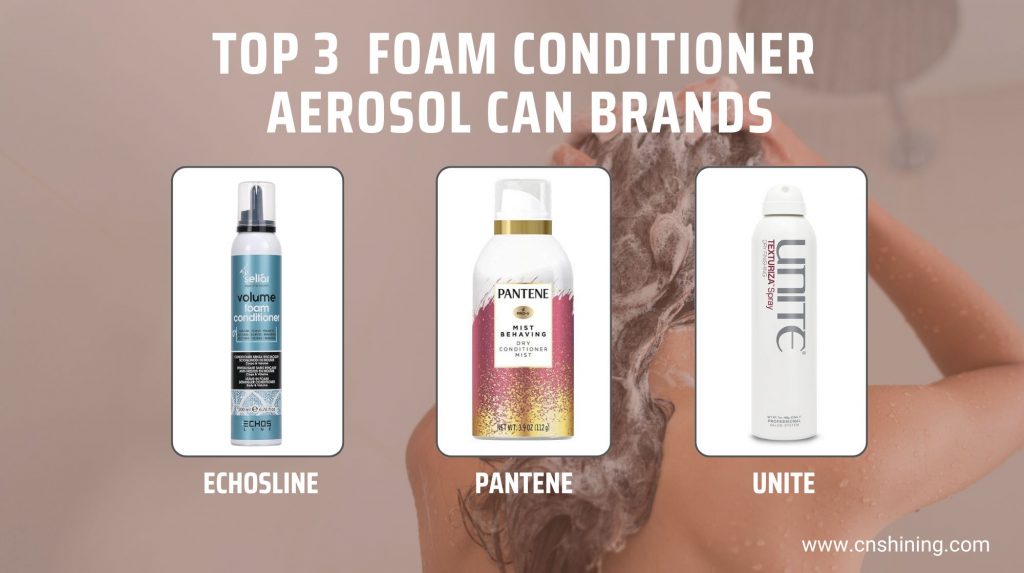
Pantene
Brand Advantages: Pantene enjoys unparalleled brand awareness, with 91% recognition in the U.S. and a global brand value of $5.57 billion in 2020. Its accessibility, affordability, and extensive research make it a household name. Recent TikTok-driven resurgence highlights its appeal across generations.
Product Features: Pantene Pro-V Foam Conditioners (e.g., Daily Moisture Renewal, Sheer Volume) are formulated with pro-vitamin B5 (panthenol) and moisturizing lipids, delivering lightweight hydration without weighing down hair. They excel for fine, brittle, or damaged hair, offering softness and volume. Aerosol cans ensure easy application, with 6 oz capacities retailing around $5-$10. Consumer reviews praise softness and manageability, averaging 4.2/5 stars on Amazon.
Consumer Feedback: Users love the fruity scent, non-greasy feel, and effectiveness on fine or damaged hair. However, some report silicone buildup or scalp irritation, and a 2021 recall of aerosol products due to benzene concerns raised safety questions.
UNITE
Brand Advantages: UNITE is a premium salon brand known for professional-grade hair care, favored by stylists for its high-quality formulations. It has a strong niche following among consumers seeking luxury products, though its brand awareness is lower than Pantene’s due to its salon-focused distribution.
Product Features: UNITE’s 7SECONDS Conditioner Foam (available in aerosol cans, ~6.7 oz, ~$20-$30) uses hydrolyzed proteins and botanical extracts to detangle, hydrate, and protect hair. Designed for all hair types, it’s lightweight, sulfate-free, and paraben-free, appealing to eco-conscious consumers. The aerosol delivery ensures even application, enhancing shine and smoothness.
Consumer Feedback: Stylists and users praise its detangling and shine-enhancing properties, especially for color-treated or coarse hair. Limited retail availability and higher price points are drawbacks, but feedback on professional platforms highlights consistent performance. Data on consumer reviews is less extensive than Pantene’s due to its niche market.
Echosline
Brand Advantages: Echosline, an Italian professional hair care brand, is gaining traction in Europe and globally for its eco-friendly and innovative products. Its brand awareness is lower than Pantene and UNITE, but it appeals to salons and sustainability-focused consumers.
Product Features: Echosline’s foam conditioners (e.g., Seliar Luxury Conditioner Foam, ~6.8 oz, ~$15-$25) feature argan oil, keratin, and plant-based extracts for nourishment and repair. Packaged in recyclable aluminum aerosol cans, they align with sustainable packaging trends. The lightweight foam suits fine to medium hair, offering hydration and frizz control.
Consumer Feedback: European salon reviews commend its nourishing effects and eco-conscious packaging, but consumer feedback is sparse compared to Pantene. Limited global distribution restricts its market presence, and pricing is higher than drugstore brands, positioning it as a premium option.
Price Distribution of Foam Conditioner Aerosol Products on Amazon
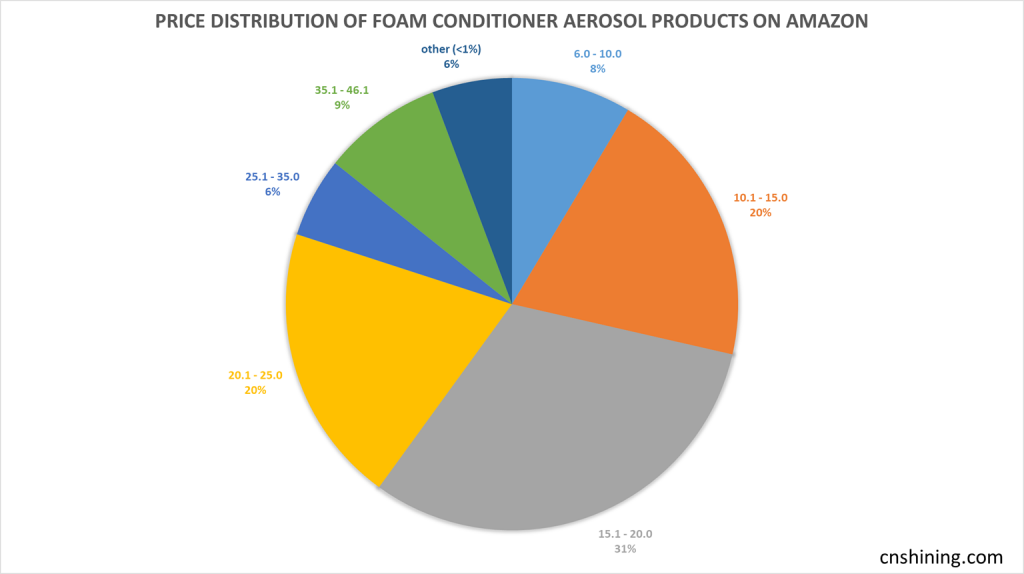
As an aerosol can manufacturer, I analyzed the price distribution of foam conditioner aerosol products on Amazon to understand market trends and consumer preferences. The data, spanning 35 products, reveals a diverse price range from $6.95 to $46.07. The majority (31.43%) fall within the $15.1-$20.0 range, indicating a sweet spot for mid-tier products that balance affordability and quality. Another 20% are priced between $10.1-$15.0 and $20.1-$25.0 each, suggesting strong demand for both budget-friendly and slightly premium options. Only 8.57% exceed $35.0, reflecting a niche for high-end or professional-grade conditioners, while 8.57% are budget options under $10.0. This distribution highlights opportunities for manufacturers to target mid-range aerosol cans with sustainable packaging, aligning with consumer trends and eco-conscious demands in the growing foam conditioner market.
Foam Conditioner Aerosol Capacities: Unpacking Amazon’s Most Popular Sizes
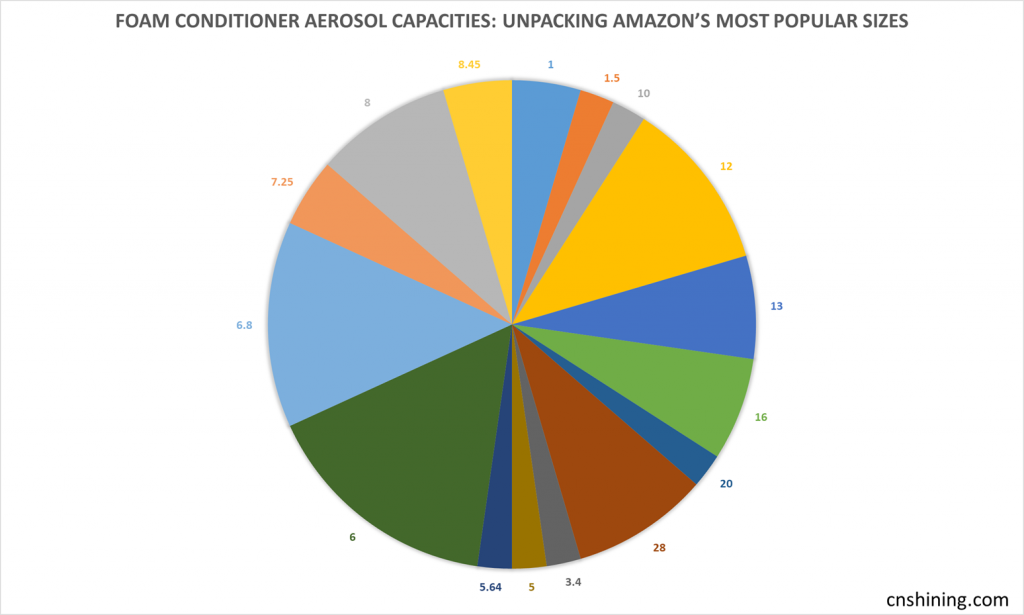
| Diameter | Length | Liquid Gas | Liquid Gas | Compressed Gas(BOV) | Full Capacity |
| mm | mm | ml | oz | ml | ml |
| 35 | 65 | 40 | 1.35 | 30 | 55 |
| 35 | 88 | 50 | 1.69 | 75 | |
| 35 | 156 | 100 | 3.38 | 75 | 140 |
| 40 | 138 | 100 | 3.38 | 75 | 140 |
| 45 | 105 | 100 | 3.38 | 75 | 140 |
| 45 | 146 | 150 | 5.07 | 125 | 210 |
| 45 | 150 | 150 | 5.07 | 125 | 210 |
| 45 | 190 | 200 | 6.76 | 150 | 270 |
| 50 | 121 | 150 | 5.07 | 125 | 210 |
| 50 | 125 | 150 | 5.07 | 125 | 210 |
| 50 | 157 | 200 | 6.76 | 150 | 270 |
| 50 | 186 | 250 | 8.45 | 200 | 335 |
| 50 | 190 | 250 | 8.45 | 200 | 335 |
| 50 | 225 | 300 | 10.14 | 250 | 405 |
| 53 | 113 | 150 | 5.07 | 125 | 210 |
| 53 | 142 | 200 | 6.76 | 150 | 270 |
| 53 | 173 | 250 | 8.45 | 200 | 335 |
| 53 | 205 | 300 | 10.14 | 250 | 405 |
| 59 | 142 | 250 | 8.45 | 200 | 335 |
| 59 | 169 | 300 | 10.14 | 250 | 405 |
| 59 | 214 | 400 | 13.53 | 300 | 520 |
| 66 | 143 | 300 | 10.14 | 250 | 405 |
| 66 | 178 | 400 | 13.53 | 300 | 520 |
| 66 | 218 | 500 | 16.9 | 400 | 650 |
| 66 | 263 | 600 | 20 | 500 | 800 |
| 74 | 263 | 750 | 25.36 | 600 | 1000 |
| 80 | 250 | 750 | 25.36 | 600 | 1000 |
As an aerosol can manufacturer, I analyzed the capacity distribution of foam conditioner aerosol products on Amazon to guide production decisions. The data, based on 44 products, highlights that 6.0 oz (177.44 ml) leads with 16%, followed by 6.8 oz (201.10 ml) at 14% and 12.0 oz (354.88 ml) at 11%. This suggests a strong consumer preference for mid-range capacities, likely due to their balance of portability and usage duration. Larger sizes like 28.0 oz (828.06 ml) at 9% and 8.0 oz (236.59 ml) at 9% also show notable demand, while smaller sizes (e.g., 1.0 oz at 5%) cater to niche travel needs. This distribution encourages me to focus on 6-12 oz aluminum aerosol cans, integrating sustainable packaging to align with the growing eco-conscious foam conditioner market.
Using the capacities provided, we’ve created a list of common sizes for Foam Conditioner Aerosol cans. Check the table below to order aluminum aerosol cans with the matching capacity.
Conclusion
This article explores the principles, pricing, and capacities of Foam Conditioner products. As a leading manufacturer of aluminum aerosol cans, we specialize in producing empty cans ranging from 30ml to 800ml, complete with valves and actuators. We also offer OEM filling services if you require product filling, and we can either utilize our existing formulas or create custom formulations tailored to your needs.
Our company guarantees a 30-day delivery timeline and brings 35 years of expertise in aluminum can manufacturing. For the U.S. market, our products are certified by the U.S. DOT (2P 2Q). Reach out to us today for more information on Foam Conditioner packaging solutions.

















